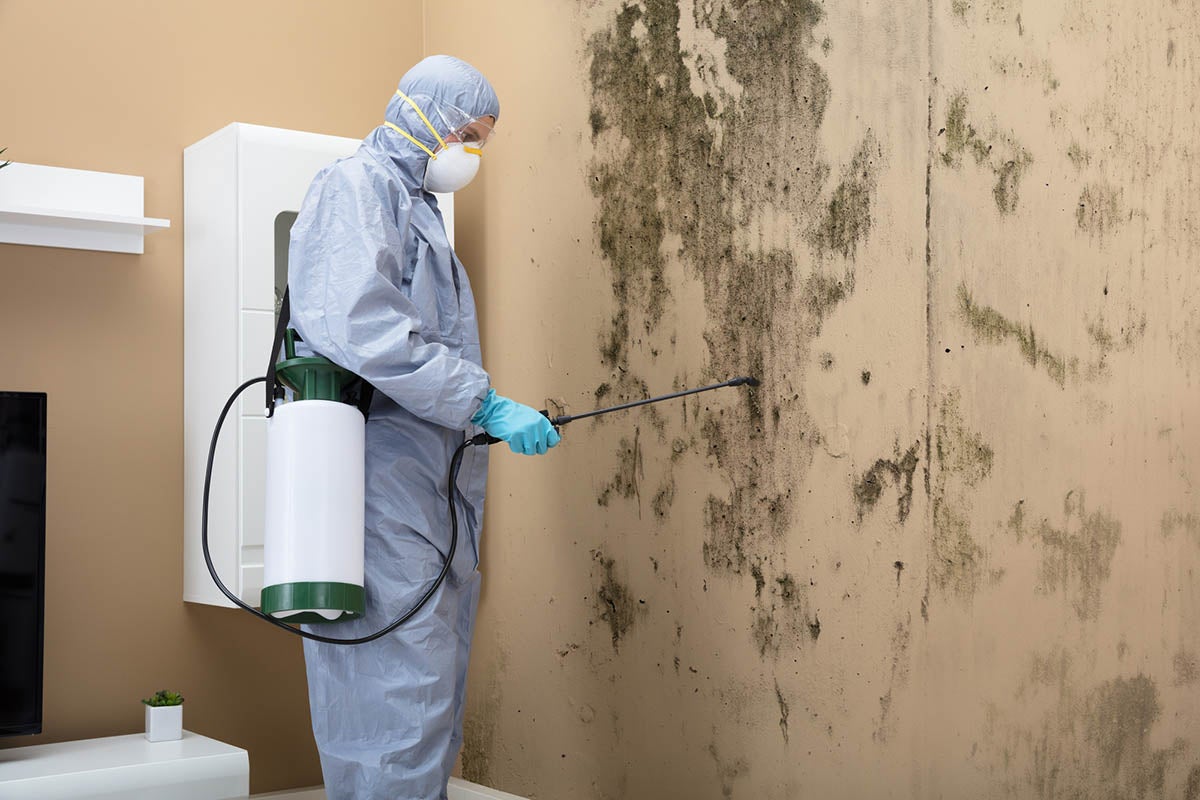Expert Tips for Article Mold Removal Success
In the world of mold and mildew remediation, efficiently eliminating mold is only half the battle; the true obstacle exists in stopping its reappearance. By sticking to skilled ideas and ideal methods, individuals can protect their spaces versus mold and mildew renewal and preserve a healthy interior setting.
Screen Humidity Degrees Consistently
Normal tracking of humidity degrees is essential in ensuring the performance of article mold removal initiatives. After completing mold removal treatments, keeping optimum moisture degrees is essential to avoid mold and mildew re-growth and make sure a healthy indoor environment. Surveillance humidity levels enables very early discovery of any spikes or fluctuations that might possibly lead to mold rebirth. High humidity levels over 60% create a helpful atmosphere for mold and mildew to flourish, making normal checking a proactive action to avoid any future mold concerns - testing air quality after mold remediation.
Furthermore, establishing a regular timetable for humidity checks, especially in risky locations such as restrooms, basements, and cooking areas, is a proactive technique to mold avoidance. By continually keeping track of humidity degrees, property owners can properly mitigate the threat of mold and mildew reoccurrence and preserve a healthy and balanced interior atmosphere post-remediation.
Conduct Thorough Inspections Post-Remediation
Following the conclusion of mold remediation treatments, it is imperative to conduct extensive examinations to verify the effectiveness of the removal process. These post-remediation examinations are critical in guaranteeing that the mold problem has actually been successfully resolved which there is no reoccurrence or continuing to be mold growth. Assessments need to be executed by qualified specialists that have competence in identifying mold and analyzing indoor air quality.
During these evaluations, different methods such as aesthetic analyses, air tasting, and surface area sampling might be utilized to thoroughly review the remediated locations. Visual evaluations entail a detailed evaluation of the properties to look for any type of noticeable signs of mold growth or water damage. Air sampling aids in establishing the air-borne mold and mildew spore levels, while surface sampling can identify mold and mildew particles on surface areas.
Implement Proper Ventilation Strategies
After making certain the efficiency of the mold and mildew remediation procedure via detailed evaluations, the next critical action is to concentrate on executing proper ventilation approaches. Adequate air flow is important in preventing mold and mildew reoccurrence by controlling dampness levels and promoting air blood circulation. To achieve this, it is recommended to use exhaust fans in areas susceptible to high moisture, such as washrooms and kitchen areas. In addition, opening up doors and windows when weather allows can aid boost air movement and lower wetness accumulation. Air dehumidifiers and purifiers are likewise valuable devices in keeping ideal interior air quality.
Appropriate ventilation not only aids in avoiding mold growth however additionally adds to the general health and wellness and comfort of occupants. By guaranteeing ample air flow throughout the residential or commercial property, you can decrease the threat of mold and mildew regrowth and develop a healthier living setting.

Use Mold-Resistant Materials for Services
To diy mold removal vinegar improve the long-term performance of mold remediation efforts, including mold-resistant materials for fixings is crucial in mitigating the threat of future mold growth. Mold-resistant materials are designed to stand up to moisture and prevent mold development, making them a necessary option for locations vulnerable to moisture and moisture. When repairing locations affected by mold and mildew, using products such as mold-resistant drywall, mold-resistant paints, and mold-resistant caulking can aid stop mold reoccurrence.
Mold-resistant drywall is a superb alternative to standard drywall in locations like bathrooms and cellars where dampness degrees are greater. This type of drywall has a special finishing that resists mold and mildew development also when revealed to damp conditions. In addition, using mold-resistant paints containing antimicrobial agents can even more hinder mold advancement on ceilings and walls.
In areas where wetness is typical, such as kitchen areas and washrooms, making use of mold-resistant caulking around sinks, bathtubs, and home windows can help seal out water and avoid mold from holding in splits and crevices. By buying these mold-resistant products during repair services post-remediation, you can significantly reduce the chance of future mold and mildew problems and preserve a healthier interior atmosphere.
Maintain Tidiness and Address Water Issues
After mold remediation, it is vital to keep a clean environment to avoid the regrowth of mold and mildew. Leaks, water invasion, or high moisture degrees can develop the excellent breeding ground for mold, so it is vital to deal with any kind of water-related problems instantly.
To preserve tidiness, think about utilizing HEPA filters in vacuum cleaners and air cleansers to trap mold spores and avoid mold removal hvac their flow in the air. Making sure correct ventilation in locations vulnerable to moisture build-up, such as cooking areas and bathrooms, can help keep moisture degrees in check. By staying alert regarding cleanliness and addressing water issues without delay, you can properly stop mold reinfestation and maintain a healthy and balanced indoor environment.
Verdict

In the world of mold and mildew removal, effectively eradicating mold is only half the battle; the real obstacle exists in stopping its reappearance. After completing mold remediation procedures, maintaining ideal humidity levels is hop over to here vital to prevent mold re-growth and ensure a healthy indoor environment. High humidity levels over 60% develop a conducive atmosphere for mold and mildew to grow, making normal monitoring a proactive measure to avoid any future mold issues.
To enhance the lasting performance of mold and mildew removal efforts, incorporating mold-resistant materials for repairs is crucial in mitigating the threat of future mold and mildew development. After mold remediation, it is critical to keep a clean environment to protect against the regrowth of mold and mildew.
Comments on “After Mold Remediation Methods for Clean Spaces”